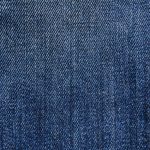As I run my fingers over the smooth surface of silk and satin, I can't help but notice the subtle differences that set them apart.
These fabrics, often mistaken for one another, hold distinct qualities that cater to various preferences and needs.
From their origins to their unique uses, exploring the nuances between silk and satin unveils a world of elegance and practicality waiting to be discovered.
Table of Contents
Key Takeaways
- Silk is a natural, luxurious fiber with exceptional strength and a soft texture.
- Satin, often made from polyester, has a glossy appearance and a slippery feel.
- Silk demands delicate care but is eco-friendly and biodegradable.
- Satin, more affordable and less durable, relies on chemical-heavy processes for production.
Origins of Silk and Satin
Originating in ancient China around 2700 BCE, silk production was a closely guarded secret for centuries, contributing to its mystique and allure. This natural fiber, obtained from the cocoons of silkworm larvae, has a rich history deeply embedded in Chinese textile traditions.
On the other hand, satin, known for its glossy and luxurious appearance, also has its origins in China, where the satin weave technique was developed before making its way to Europe.
Silk, a fine and delicate fabric, symbolizes luxury and wealth due to its intricate production process and exquisite feel. In contrast, satin, which can be made from silk, polyester, nylon, or other fibers, boasts a smooth and shiny surface achieved through a specific weaving method.
Both silk and satin fabrics have stood the test of time, with their origins closely tied to ancient Chinese craftsmanship and elegance. The allure of these fabrics continues to captivate individuals worldwide, showcasing the enduring legacy of Chinese textile traditions.
Textural Contrasts Between Silk and Satin
Silk and satin, while both originating in ancient China and boasting rich histories, distinctly differ in texture, with silk offering a soft, luxurious feel and satin showcasing a glossy, sleek surface. Silk fabric is renowned for its natural protein fiber composition, resulting in a smooth, soft texture that feels luxurious and breathable against the skin. On the other hand, satin, often made from polyester, boasts a shiny, slippery texture achieved through a satin weave that gives it a lustrous finish. The tactile contrast between silk and satin is striking, with silk embodying a natural, organic sensation, while satin exudes a synthetic, sleek touch. To visually emphasize these textural disparities:
| Silk | Satin |
|---|---|
| Soft | Glossy |
| Luxurious | Sleek |
| Natural feel | Synthetic |
| Breathable | Shiny |
| Organic | Slippery |
Unique Uses of Silk Vs. Satin
When it comes to unique uses of silk versus satin, the durability of the fabrics plays a significant role in their applications. Understanding the maintenance differences between silk and satin is crucial for preserving their quality and appearance over time.
Whether it's for fashion or decor, choosing between silk and satin can elevate the aesthetics and comfort of various products.
Durability of Fabrics
In considering the durability of fabrics like silk and satin, one must acknowledge their distinct characteristics and applications in various industries. When it comes to durability, here are the key differences between silk and satin:
- Silk is known for its exceptional strength, being one of the strongest natural fibers available.
- Satin, with its weave structure and synthetic fiber content, is less durable compared to silk.
- Silk is often chosen for high-end fashion and luxury items where longevity is crucial.
- Satin, on the other hand, is commonly used in bedding and interior design, focusing more on aesthetic appeal than durability.
These factors play a significant role in determining the unique uses of silk and satin in different products and industries.
Maintenance Differences
With distinct maintenance requirements setting them apart, silk and satin cater to unique uses and applications in various industries. Silk demands delicate care, necessitating hand washing or gentle machine washing to maintain its luxurious feel and longevity. On the other hand, satin, known for its durability, can withstand machine washing and is a popular choice for items like bedding that require frequent cleaning.
When it comes to drying, silk should be air-dried indoors away from direct sunlight to prevent damage, while satin can be tumble dried on low heat for convenience. Silk's delicate nature makes it ideal for items like silk pillowcases, benefiting hair and skin, whereas satin is commonly utilized for more robust applications like bedding.
Proper maintenance practices, such as avoiding harsh chemicals and fabric softeners, are crucial to preserve silk's quality and luxurious characteristics.
Fashion and Decor
Satin and silk, each known for their distinct qualities, find unique and elegant uses in the realms of fashion and decor. When considering unique uses, the difference between the two fabrics becomes more pronounced:
- Silk:
- Known for its softness, luster, and breathability.
- Commonly used in high-end fashion garments like bridal gowns and fine lingerie.
- Polyester Satin Fabric:
- Offers a smooth, shiny finish and durability.
- Often preferred for upholstery, draperies, and bedding.
Both fabrics have their place in fashion and decor, with silk exuding opulence and sophistication, while satin provides a practical and stylish alternative with a glossy appearance. The choice between them often depends on the desired look and feel one wishes to achieve.
Durability of Silk and Satin
When comparing the durability of silk and satin, one can observe a significant contrast in their resilience over time. Silk, being a natural fiber known for its exceptional strength, surpasses satin in terms of longevity. The weaving structure of silk fibers contributes to its durability, making it one of the strongest natural fibers available.
On the other hand, satin, with its synthetic fiber content and different weaving structure, is less durable compared to silk. The natural protein composition of silk provides it with the strength and resilience needed to withstand wear and tear over extended periods. In contrast, satin may be more prone to snagging and wear faster, especially in high-friction areas or with rough handling.
Therefore, when considering the durability of these fabrics for long-term use, silk proves to outperform satin significantly, making it a more resilient choice that can withstand the test of time.
Maintenance Tips for Silk and Satin
In caring for silk and satin fabrics, proper maintenance is essential to preserve their quality and longevity. When it comes to silk, it's crucial to use a silk-specific detergent for washing to avoid damage and maintain its luxurious feel. Machine washing silk on a gentle cycle helps prevent fabric abrasion and keeps the fabric soft.
Avoid using fabric softeners on silk, as they can leave residue and affect the fabric's texture negatively. For drying silk, it's best to do so indoors away from direct sunlight to prevent color fading and preserve its luster. Additionally, silk bedding typically doesn't require ironing, which helps in maintaining the fabric's quality and luxurious feel over time.
Maintenance Tips for Silk and Satin:
- Use silk-specific detergent for washing silk.
- Machine wash silk on a gentle cycle.
- Avoid using fabric softeners on silk.
- Dry silk indoors away from direct sunlight.
Environmental Impact: Silk Vs. Satin
When considering the environmental impact of silk versus satin, it's essential to look at the material sourcing and production processes involved. Silk, obtained naturally from silkworms, offers a more eco-friendly option compared to satin, which requires heavy chemical usage and petroleum-based compounds.
Material Sourcing
Sourcing materials for silk and satin involves considering their environmental impact. Silk is derived naturally from silkworm cocoons, while satin relies on chemical-heavy processes. When choosing between the two fabrics, it's essential to understand how their production impacts the environment:
- Silk production is eco-friendly due to its natural harvesting process.
- Satin production relies on heavy chemicals, increasing its environmental footprint.
- Silk fabric is biodegradable, making it a sustainable choice.
- Opting for silk over satin can help reduce chemical runoff and textile pollution.
Understanding the differences in material sourcing between silk and satin can lead to more informed and environmentally conscious decisions when selecting fabrics for various purposes.
Production Processes
Considering the environmental impact, the production processes for silk and satin starkly contrast in their approach to sustainability. Silk, known for its biodegradable nature, involves a natural and labor-intensive process of harvesting silk threads from silkworms. On the other hand, satin production typically relies on chemical-heavy processes and petroleum-based compounds, leading to higher chemical usage and environmental implications. To illustrate this further, let's compare the production processes of silk and satin in the table below:
| Aspect | Silk | Satin |
|---|---|---|
| Biodegradability | Biodegradable fibers | Less biodegradable |
| Chemical Usage | Minimal chemical usage | Heavy chemical reliance |
| Environmental Impact | Lower impact on the environment | Higher impact due to chemicals |
Pricing and Accessibility Comparison
Comparing the pricing and accessibility of silk and satin reveals distinct differences in affordability and availability. When looking at the two fabrics side by side, it becomes evident that:
- Silk is generally more expensive than satin due to its intricate production process and high-quality fibers. Factors such as the type of silk, weave, and quality grade all contribute to its elevated price point.
- Satin, on the other hand, is more accessible and affordable compared to silk. Being a weave rather than a specific material, satin can be produced with various fibers at different price ranges, making it a popular choice for various applications.
- The cost of silk is influenced by its luxurious reputation and limited production, which further drive up its pricing. In contrast, satin's versatility allows for cost-effective options to be available in the market.
- Satin's affordability and accessibility make it a preferred choice for those seeking a luxurious look without the high price tag associated with silk.
Frequently Asked Questions
Which Is Better Silk or Satin?
I prefer silk due to its luxurious feel, breathability, and natural properties. Satin, while more affordable, may lack the same benefits. Silk pillowcases are great for skin and hair health. Select based on specific needs.
How Can You Tell Silk From Satin?
When distinguishing silk from satin, look closely at the fabric's composition. Silk, a natural fiber from silkworms, feels smooth and luxurious, unlike the typically synthetic satin. This distinction highlights the elegance of silk products.
Which Lasts Longer Silk or Satin?
I find that silk generally outlasts satin due to its natural strength. Satin, often synthetic, can wear out quicker. Taking good care of both fabrics is key for longevity. High-quality silk can be a smart investment.
Does Silk Wrinkle More Than Satin?
Yes, silk wrinkles more than satin due to its delicate fibers. I prefer satin for its wrinkle-resistant qualities. It stays smooth longer, needing less upkeep. Satin's weave structure helps it resist creases, making it a durable choice.
- The Best Folding Techniques for Symmetrical Tie-Dye Designs - July 14, 2025
- How to Tie-Dye With Iron-On Vinyl as a Resist - July 14, 2025
- Creating Custom Stencils for Bleach Tie-Dyeing - July 14, 2025






